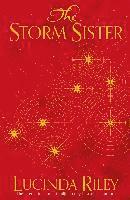My experience in that class was a bit like my experience reading The Signature of All Things: tedious and sometimes boring, yet intellectually stimulating with its own brand of fun.
This novel tells the story of Alma Whittaker. Alma is born in 1800 and is the daughter of a botanical explorer turned botanical magnate, and a staunch Dutch mother with sharp intellectual abilities who teaches her daughter how to be rational, scientific, and a most tireless problem solver. Alma gains an adoptive sister who perplexes her and she falls in love with a man who simultaneously confounds and devastates her. The setting moves from England, various ships, America, Tahiti, and the Netherlands.
Science in the 1800's is fascinating: gas lamps and telescopes, balloonists and fearless botanical explorers - it was a regular carnival of discovery. Ever since reading The Age of Wonder, Richard Holmes’ magnificent treatise on science in the 18th and 19th centuries, I have had a special affinity for this time period and the beautiful sense of intellectual trailblazing that so many intrepid scientists and explorers experienced as they delved into science like never before. This is why, despite my incredible dislike for Gilbert’s Eat, Pray, Love (I believe I compared that reading experience to rolling around in sheets of fiberglass insulation), I astonished myself by purchasing this book and saying something along the lines of, “this actually looks good.” And it was good. Sort of.
One of the most satisfying things about this novel is that Gilbert centered it on a woman who defies all the stereotypes of a heroine. She is not beautiful. Men do not desire her. She does not live the conventional life of a wife and mother, nor does she gain fulfillment in the traditional sense. Yet she is successful, satisfied (more or less), and happy. Her sensual desires keep her from becoming stodgy, but there is very little romance in her character. Alma isn’t always likeable, but she is believable and well developed.
While I enjoyed reading this book, I imagine that many people will find it tiresome. Alma studies moss, which then becomes allegorical for her own life. Moss is resilient, moss is strong, moss is adaptable, moss isn’t sexy and it isn’t impressive or very interesting to most people, but it can be beautiful in its own way. Alma is moss and not everyone will have the patience for moss.











